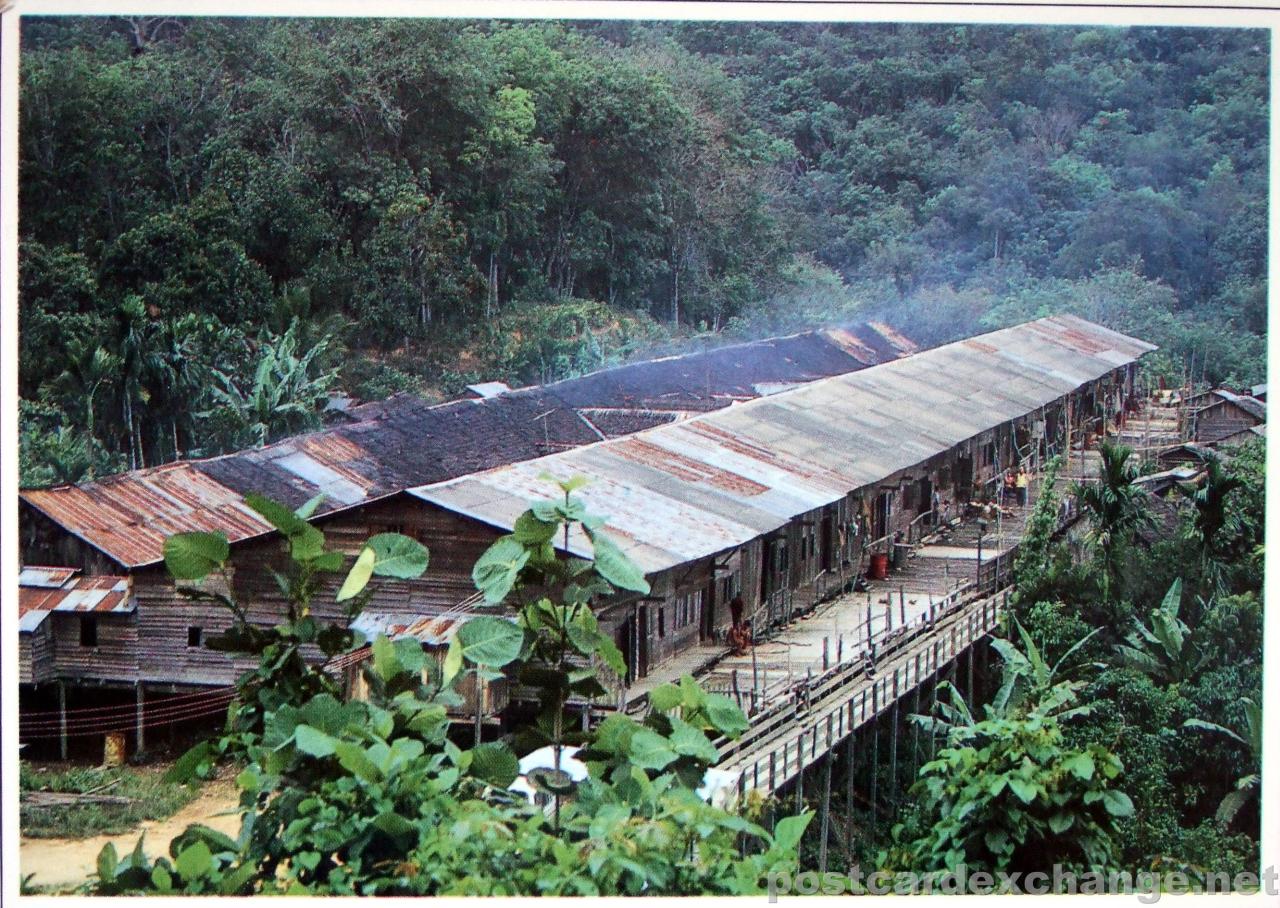
One of the most memorable experiences Sarawak has to offer is a visit to a longhouse, where you can observe a unique way of life and enjoy legendary Dayak hospitality. These thriving communities, whole villages under one roof, are not relics from the days of tribal warfare - they are the preferred way of life for a large percentage of Sarawak's rural people, particularly the Iban, the Bidayuh and the Orang Ulu.
Nowadays most longhouse dwellers are hard working farmers, and wear practical modern clothing for work and leisure. However, if you visit as part of an organized tour
group, they will take great pride in wearing their traditional costumes and regalia and performing elaborate dances and welcoming rituals for their visitors.
The long covered gallery that runs the length of an Iban longhouse is called the ruai, and this is where you will be greeted. A miring ceremony is frequently conducted to welcome visitors, where offerings of food and drink are presented to the local deities to ensure their good will. After the miring, guests will be invited to sample a glass of tuak, a potent local rice wine, and drink to everybody's good health.
Visitors are then entertained with traditional music, dances and games. After the locals have had their turn, the guests are expected to join in the fun. Anyone who refuses will soon find themselves dragged to their feet by the young ladies of the longhouse and forced to take part in the dancing.
After the entertainment is finished there are a number of options, depending on how adventurous you are. Some tour operators arrange for visitors to eat a traditional longhouse dinner with their host family and sleep on mattresses in the ruai, according to Iban tradition. Others may put their guests up in a simple guesthouse nearby, with more familiar cuisine prepared by the tour guide, who is always an accomplished cook. For lovers of luxury, a few 'longhouse resorts' are now operating, managed by professional hoteliers and serving international cuisine in resort style comfort.
Visitors who stay more than one night can get to see Iban culture at first hand, visiting the rice fields and pepper gardens, and learning how the Iban make use of the rainforest for all of their everyday needs. Some tours can last a week or more, with visits to a number of longhouses and a fair amount of jungle trekking. Second and subsequent evenings are more low-key, with visitors sitting in the ruai, drinking tuak or coffee and chatting with their hosts. The Iban are very sociable people, and many can speak English, so some fascinating conversations are guaranteed.
The journey to and from the longhouse is a very interesting and enjoyable experience. After a ride in an air-conditioned bus, a short trip in a traditional longboat introduces you to the pleasures of upriver travel. These narrow wooden craft are safe and very sturdy, and the Iban are expert boatman.
There are four main areas for visiting Iban longhouses - the Skrang River, the Lemanak River, Batang Ai, and the middle Rejang River. Most tour groups will generally visit the first three, which are half a day away from Kuching, whilst independent travellers usually opt for the Rejang area around the town of Kapit, a half day's travel from Sibu.
A few specialist operators also visit Orang Ulu longhouses deep in Sarawak's interior, where visitors are seldom seen, although these trips require quite a lot of time.
Another interesting possibility is a trek through the beautiful Bario Highlands, staying overnight in remote Kelabit longhouses. Visitors with little time to spare can visit a Bidayuh longhouse on a day trip from Kuching, or an Iban longhouse from Sibu or Miri. However, overnight stays are strongly recommended, to get the most from your visit.

No comments:
Post a Comment